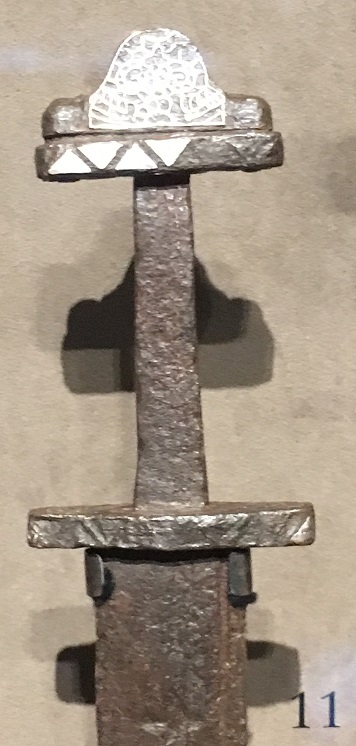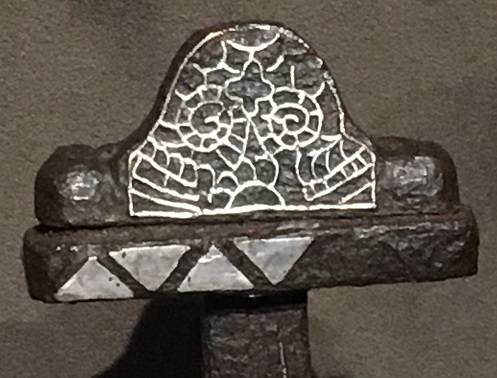Posts: 845 Location: The Netherlands
Sun 07 Jun, 2020 11:40 am
Hmm, some things do seem off...
First of all, the grip looks really long! Maybe it's also a matter of perspective in the picture but as it is, it looks way too long.
If we assume the hilt as a whole as the basic circle, the blade (as per photo) is 3,5 times the basic circle. Most early-high medieval swords in the Catalogue of "The Sword - Form and Thought" which follow the pattern of "basic circle behind the hilt", the proportion blade : hilt is mostly 5,5. In Viking swords, the hilt is generally even shorter than on those early-high medieval swords. Even if the perspective of the photo skews things a bit, I can't really make sense of that, unless it is a really short blade (<60cm) but that seems unlikely as well when one looks at the general proportions.
The Ulfberht inlay is also strange. The theory is that Ulfberht blades originated in the Frankish Rhineland. The other theory is that the single edged Viking sword is more or less typical for Norway and therefore (?) a local Norwegian production. Although both are "just theories" that doesn't add up. On the other hand, this particular inlay reads +VLFBERHT, and not +VLFBERH+T as on the more common / "genuine" (?) Ulfberhts, so this might be a (Norwegian?) copycat. Also the latter part of the inscription (HT) seems very close to the edge, seems unpractical...
Geibig dates Ulfberht incriptions to 750-950. A copycat would, I assume, likely be in the latter part of this spectrum. But the hilt, which in my opinion does not fit neatly into any Type as defined by Petersen or Geibig, seems to predate the Viking age period, especially the pommel cap, which seems to mimic Migration age / Vendel inlayed shapes. This chronological gap is difficult to explain, unless it is an (old?) hybrid.
In such outlying cases which don't fit neatly in a type, provenance is everything. I would assume that a reputable museum would display objects with good and traceable provenance, e.g. found in archeological dig site, and document it as such. I also know it's not a perfect world however... But bottom line, if this sword would come up at an auction, I would not bid on it, unless, maybe, if the price would be really low.



